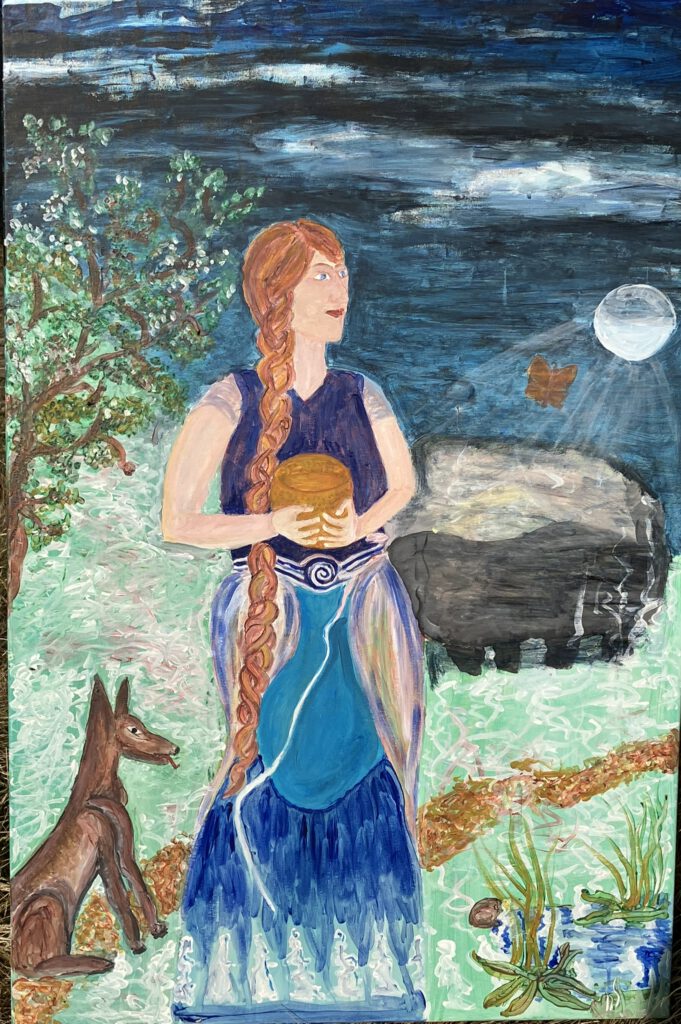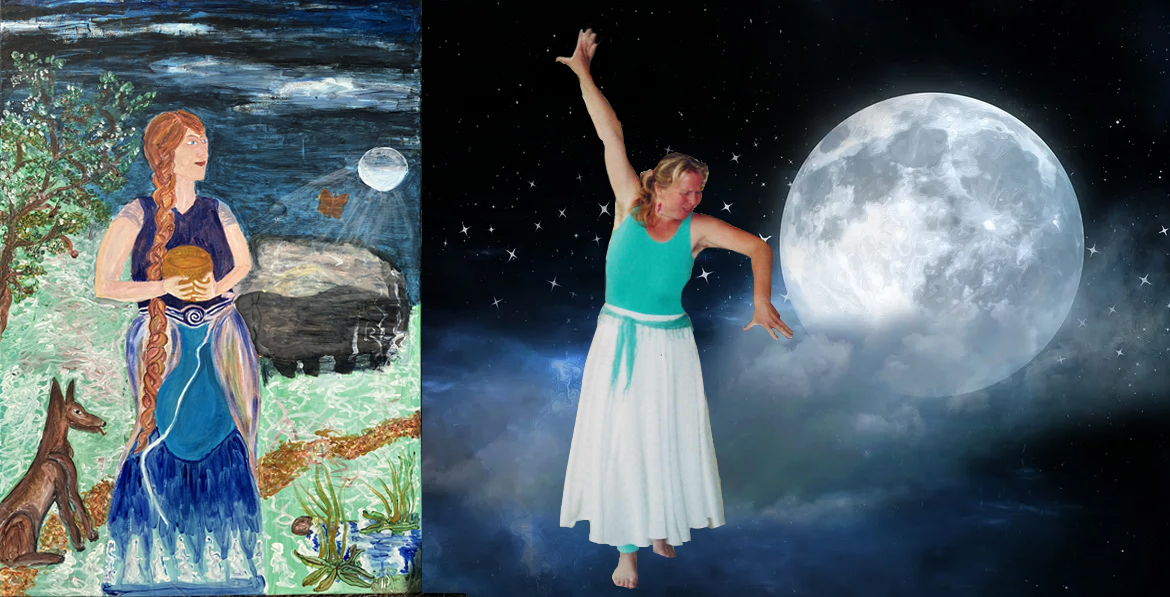Tanfana is the goddess of the night, the moon, and the stars of the subconscious. She is accompanied by a Helle hond and in the folk tales associated with the white ladies of the mist. She lives by a well. There was a large sacrificial stone on the Tankenberg that belonged to her. Tanfana has a golden cup in which she carries the souls.

Tanfana Initiations Midwife of life and death
Patroness of souls
Patroness of children’s souls
Lady of Springs and Trees
Lady of woodland
Lady of elves and goblins
Lady of the Mist and white women
Lady of passing to butterfly
Lady of reconcilation and peace
Master of herbs and medicines
Reader of moon stars and the night
Tanfana was honored by various Germanic tribes of the Tubanten area, who lived in Twente Achterhoek, were honored by several Germanic tribes in this area. Its influence extended to the area of moraines of Twente along the borders of the Roman Empire, along the river course of the Lippe up to the Externsteinen. The Martians probably formed with their neighboring tribes, such as the Brukterer and the Tenkterer, an amphiticonye (cult community) similar to that of ancient times. It is therefore believed that her sanctuary acted as a central place of worship for these tribes, along with other smaller places of worship, or as a sacred grove (lat. lucus). However, the “temple” of Tanfana cannot be compared with the architectural construction of ancient Roman cult buildings.
Tanfana as the last seeress of the Teutons We know the name of Tanfana from Tacitus, the historian of the Roman Empire.
Tacitus described a surprise raid on a Templum. This shrine (lat. templum) was clearly dedicated to the goddess Tanfana. It must have been located in the space between the rivers of the Ruhr and the Upper Lippe. The Roman general Germanicus destroyed this shrine in AD 14 as part of a campaign against the Martians (Germanicus campaigns). According to Tacitus, the Roman army surprised a presumably predominantly male sect community that had gathered there during the performance of cult rites, particularly the celebration of a festival of sacrifice with an associated feast. Tacitus word (Germanic) templum may not have been the correct term for religious and cultural gatherings of van der Germanen. The Germanic sanctuaries obviously had a different shape. The Germans and the Celts honored their gods at special trees, forests, springs, and burial mounds or intersections of powerful ley lines. There they keep their cult rites.
